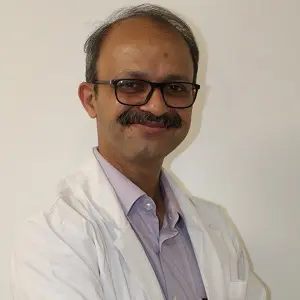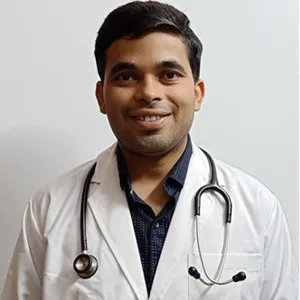Pediatric Dermatology is the area of medical sciences that treats any skin-related problems in children. Dermatological issues are more common in children than we think; up to 30 per cent of the children who go to the hospital are coming with some skin conditions.
But only a few are aware of the complexities of the field. Even pediatric dermatology as a subspeciality is in its infancy. It was only in 2000 that it was officially boarded as a subspecialty.
It is an exciting field in which everyone, especially parents, should have a proper understanding of their child's health. Because children are not just tiny people, they can't fully express themselves or understand what is wrong with them like adults. An experienced pediatric doctor will know how and what to ask them by keeping them at ease and understanding the problems.
Diseases:
Children's problems in dermatology are complex. It is difficult to distinguish between harmless rashes and those that cause complications. So, a detailed understanding of the diseases is beneficial to determine them.
Atopic Dermatitis
It is the most common chronic inflammatory disease in childhood. This skin condition is recognized when the child's skin is red, dry, itchy, and bumpy.
Symptoms
we can identify it when a child's skin forms a rash that is primarily red and has an itchy sensation.
AD is commonly caused due to immune deficiencies and is primarily genetic.
Diagnosis and treatment
The pediatric dermatologist will evaluate the symptoms and ask questions about symptoms, the child's past health, and the family's health. And after eliminating other possible diseases, he will diagnose them as Atopic Dermatitis.
There is no cure for this disease. The doctor will advise some dietary changes and prescribe moisturizers and medicines to control the inflammation.
Port Wine Stains
It is a type of birthmark which grows through time with the child. In most cases, it is a harmless part of the child, but sometimes it can grow huge with further complications. It got its name as the mark looks like maroon wine spilt over the area.
Symptoms-
This skin condition can affect anywhere in the body. The stains can be of any size but grow over time—even the texture changes. The complications arise when the port wine stains become darker and more disfiguring for the child.
Diagnosis and Treatment-
Doctors can generally diagnose by looking at the mark. But when the mark is near the forehead or eye, great care needs to be taken cause it can be related to a rare neurological disorder called Sturge-Weber syndrome, which is dangerous.
Treatment follows a laser procedure followed by an ointment application. The doctor decides it based on the case.
Infantile Hemangiomas
When a tangible group of blood vessels grows in or under a baby's skin, it forms a birthmark called Infantile Hemangioma.
Symptoms-
This skin condition might not grow big at first, but later it forms a flat blue or red patch. It grows in later few months. It generally wears off after a few years but causes many child problems if it persists further.
Diagnosis and Treatment-
The doctor diagnoses by observing the infected area. There can be varied types of treatment depending on the severity of the problem. The pediatrician can suggest medicines, direct surgery, or laser surgery.
Alopecia Areata
This condition causes hair loss on the scalp and sometimes elsewhere in the body. It is formed around some patch-like structure. It is not exclusively a child problem; it occurs in adults too.
Symptoms-
When one or more round bald patches appear on the scalp, it starts the hair fall of that area. Complete hair loss doesn't happen often; the hair grows back eventually. This process can continue many times over.
Diagnosis and treatment
It can be straightly diagnosed by looking at the child's scalp.
This condition doesn't usually require any treatment. But, the application of the medicine to the infected areas can help in the regeneration of hair.
Conclusion
Even though skin conditions in pediatric patients are widespread, Pediatric dermatology is a relatively new subspecialty still making breakthroughs in treatments. Pediatric dermatology requires maintenance efforts and specific dietary care parents should take to maintain the child's health. So if your child forms any skin-related complications, you must take him to a trusted pediatric dermatologist for your child's wellbeing.
Request an appointment at Apollo Cradle, Bengaluru - Koramangala. Call 1860-500-4424 to book an appointment.
The pediatric dermatologist has the experience and qualifications to treat a wide range of pediatric skin condition
Though the condition is prevalent in adolescent teens, if it persists for many months, it is best to consult.
Right from infancy, if there's any problem, you can take the child to a pediatric dermatology clinic.
Yes, this is certainly something you can have done, but it will require parental consent.
If a family member has a history of melanoma, then the child should get their skin checked.
Our Doctors
Treatments
- Anaesthesia & Pain Management
- General Pediatrics
- Growth Chart
- Newborn Screening
- Pediatric Allergy
- Pediatric Dermatology
- Pediatric Endocrinology
- Pediatric Nutrition
- Pediatric Orthopedics
- Pediatric Psychology
- Pediatric Surgery & Urology
- ROP Screening
- Stem Cell Banking
- Vaccination/Immunisation Schedule

 93% Patient Satisfaction Score
93% Patient Satisfaction Score







